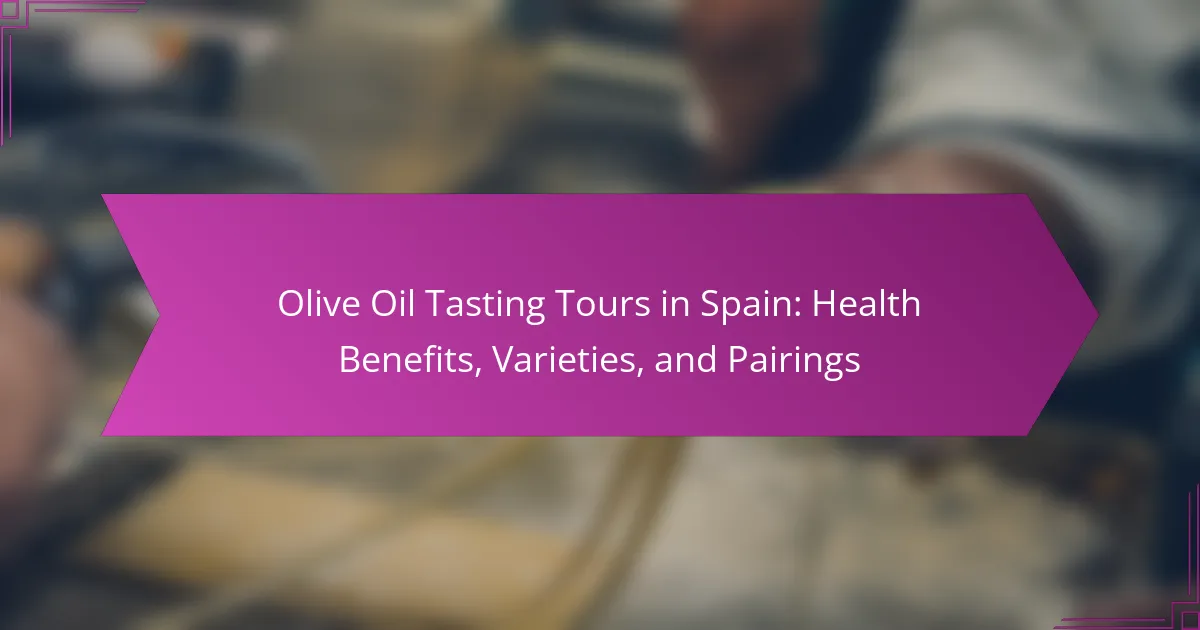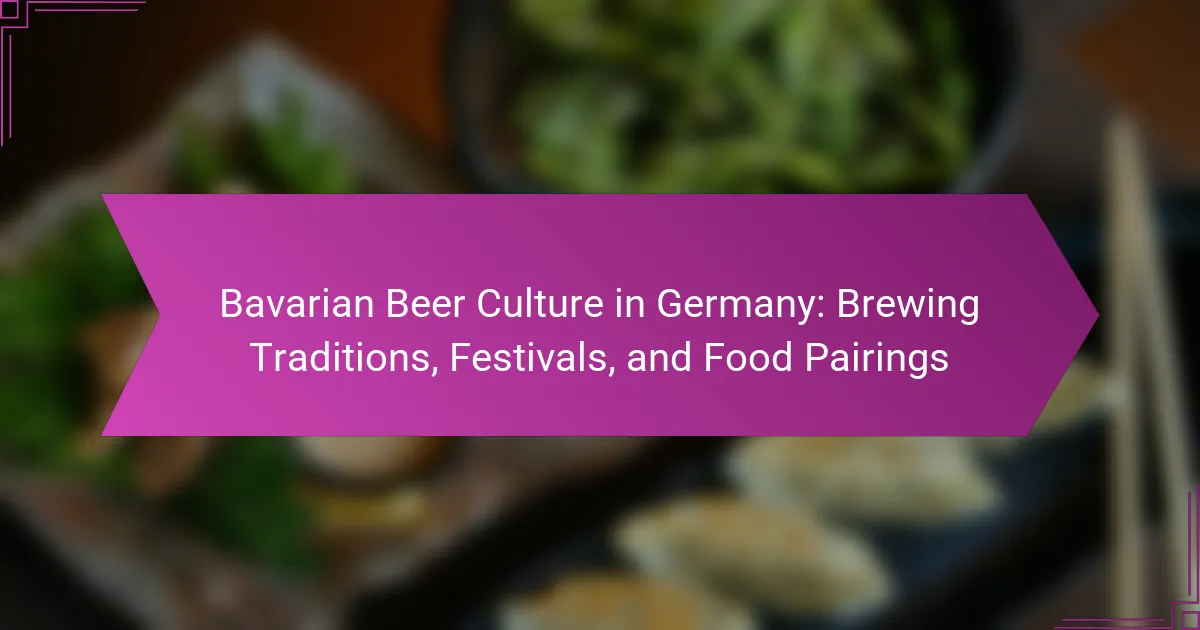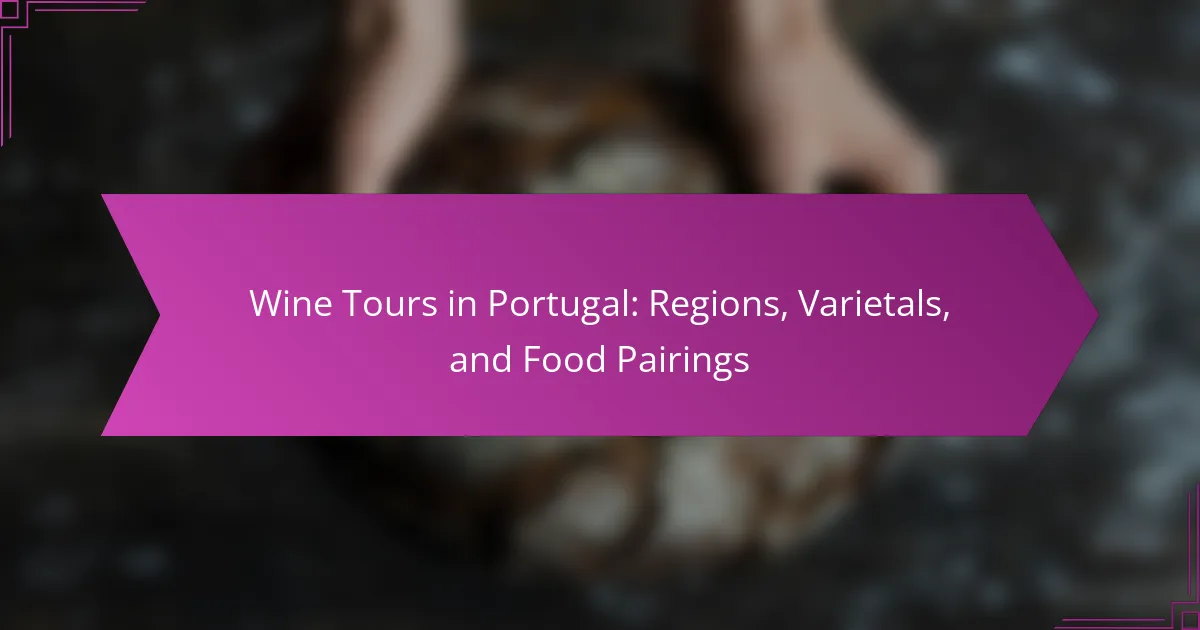Truffle hunting in Italy offers a unique experience, combining skill and tradition. Explore essential techniques for locating truffles, discover the prime regions like Piedmont and Tuscany, and learn about their culinary uses. Understand the cultural significance and challenges faced by hunters in this rich gastronomic landscape.
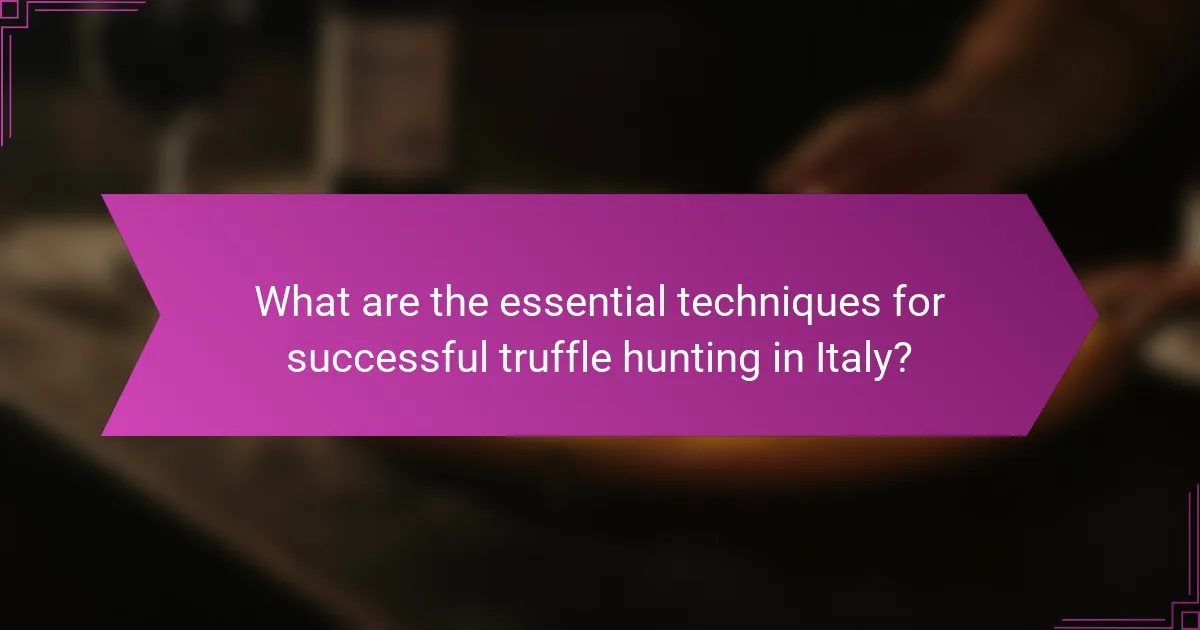
What are the essential techniques for successful truffle hunting in Italy?
Successful truffle hunting in Italy requires knowledge of specific techniques and practices. Key methods include using trained dogs to locate truffles, understanding the ideal soil and environmental conditions, and knowing the best seasons for hunting.
1. Utilize trained dogs for their superior sense of smell.
2. Focus on regions known for truffle production, such as Piedmont and Tuscany.
3. Identify suitable habitats, including oak and hazelnut trees.
4. Time your hunts during peak seasons, typically autumn and winter.
5. Respect local regulations and sustainable practices to preserve truffle populations.
These techniques enhance the chances of a successful and ethical truffle hunting experience.
How do trained dogs enhance the truffle hunting experience?
Trained dogs significantly enhance the truffle hunting experience by increasing efficiency and accuracy. Their keen sense of smell allows them to locate truffles buried underground, often faster than human hunters. In regions of Italy known for truffle production, such as Piedmont and Tuscany, dogs are preferred over traditional methods, like using pigs, due to their trainability and reliability. Additionally, dogs can navigate various terrains, making them ideal companions for truffle hunters. Their presence also adds a layer of enjoyment and companionship to the hunt, enriching the overall experience.
What tools are necessary for an effective truffle hunt?
Essential tools for an effective truffle hunt include a truffle dog, digging tools, and a basket for collection. A trained truffle dog can locate truffles underground by scent. Digging tools, such as a small spade or trowel, help extract the truffles without damaging them. A sturdy basket is necessary to carry the harvested truffles safely.
When is the best season for truffle hunting in Italy?
The best season for truffle hunting in Italy is typically from late autumn to early winter, specifically from October to December. During this period, the conditions are ideal for finding the highly sought-after black truffles. The unique climate and soil in various Italian regions, such as Piedmont and Tuscany, contribute to the truffle’s growth. Additionally, truffle hunting experiences often include guided tours and culinary uses, enhancing the overall adventure.
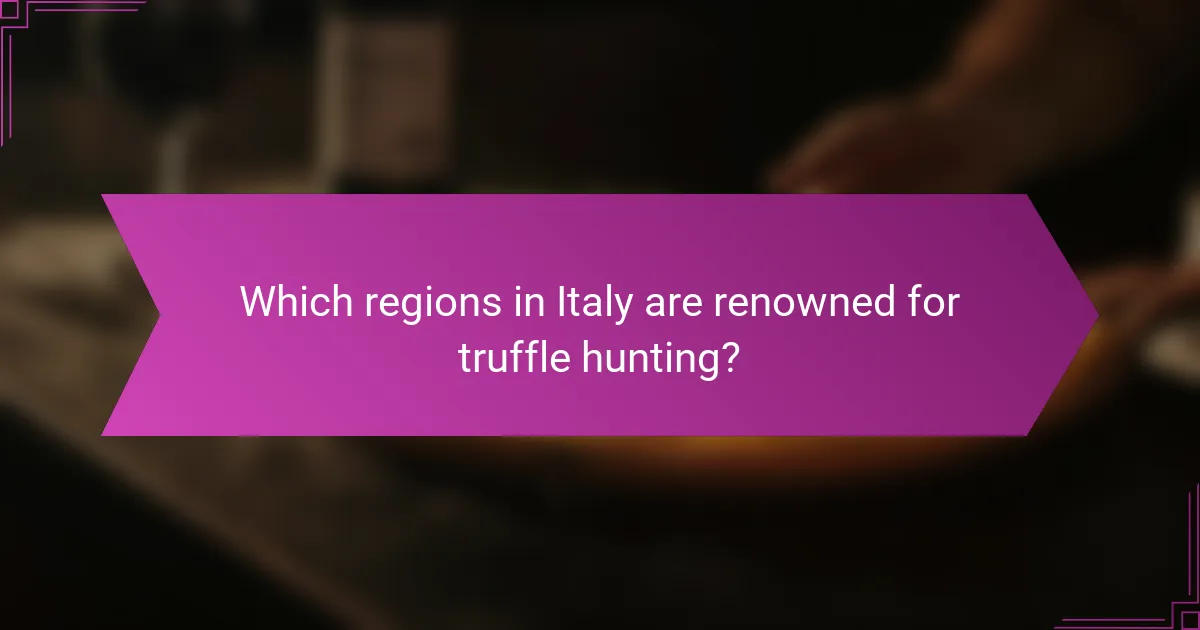
Which regions in Italy are renowned for truffle hunting?
The regions in Italy renowned for truffle hunting include Piedmont, Tuscany, Umbria, and Marche. These areas offer ideal climates and soil conditions for truffle growth. Piedmont is famous for its white truffles, while Tuscany is known for both white and black truffles. Umbria is celebrated for its black truffles, and Marche is gaining recognition for its unique varieties. Each region hosts seasonal festivals that celebrate truffle hunting and culinary uses.
What unique characteristics define the truffles from Piedmont?
Piedmont truffles are distinguished by their intense aroma, unique flavor profiles, and seasonal availability. The white truffle, or Tuber magnatum, is particularly prized for its earthy, garlicky taste and is harvested from late September to December. Its rarity and the specific soil conditions of the Piedmont region contribute to its high market value. Additionally, these truffles are often found in symbiosis with local tree species, enhancing their unique characteristics.
How do the truffles from Tuscany differ from those in Umbria?
Tuscany truffles, particularly the white truffle, are known for their intense aroma and flavor, while Umbria truffles, especially the black truffle, offer a more earthy taste. Tuscany’s unique climate and soil contribute to the distinct characteristics of its truffles, making them highly sought after in culinary circles. In contrast, Umbria’s truffles are celebrated for their versatility in various dishes. Both regions provide unique truffle hunting experiences that highlight their respective flavors.
Which lesser-known regions are emerging as truffle hunting hotspots?
Emerging regions for truffle hunting in Italy include Abruzzo, Molise, and the lesser-known parts of Tuscany. These areas are gaining recognition for their unique soil and climate conditions that support truffle growth. In Abruzzo, the Apennine Mountains provide a diverse ecosystem favorable for various truffle species. Molise offers rich woodlands where both black and white truffles thrive. Tuscany’s off-the-beaten-path locations are becoming popular among hunters seeking quality truffles away from traditional hotspots like Alba.
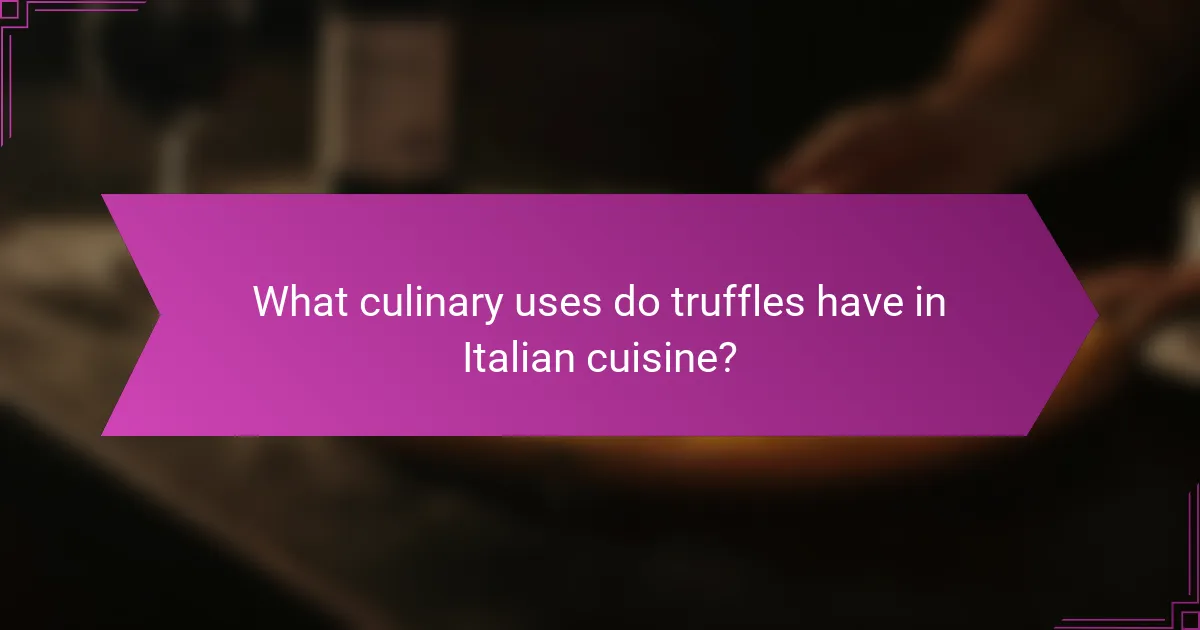
What culinary uses do truffles have in Italian cuisine?
Truffles are used in Italian cuisine for their intense flavor and aroma, enhancing dishes like pasta, risotto, and sauces. They can be shaved over dishes, infused in oils, or incorporated into spreads. Their unique earthy taste elevates both simple and gourmet meals, making them a sought-after ingredient. Truffle oil, for example, is popular for drizzling on pizzas and salads, while truffle butter adds richness to various preparations.
How can truffles elevate traditional Italian dishes?
Truffles can significantly enhance traditional Italian dishes by adding rich, earthy flavors. These fungi are often used in pasta, risottos, and sauces, elevating their taste profile.
Truffle hunting experiences in Italy reveal various techniques, including the use of trained dogs to locate these delicacies. Regions like Piedmont and Tuscany are renowned for their truffles, contributing to local culinary traditions.
The unique attributes of truffles, such as their intense aroma and distinct flavor, allow chefs to create gourmet dishes that highlight the essence of Italian cuisine. Culinary uses vary, from shaving fresh truffles over dishes to infusing oils and butters with their essence.
As a result, incorporating truffles into traditional recipes not only enhances flavor but also adds a touch of luxury, making meals memorable.
What are the best methods for preparing and serving truffles?
The best methods for preparing and serving truffles include shaving them over dishes, infusing oils, and incorporating them into sauces. Shaving fresh truffles enhances the flavor of pasta and risottos. Infused truffle oil can elevate simple dishes like popcorn or salads. Truffle butter blends well with meats and vegetables, providing a rich, aromatic experience.
Which truffle-infused products are popular in Italian markets?
Truffle-infused products popular in Italian markets include truffle oils, truffle salts, truffle sauces, truffle pasta, and truffle cheese. These products enhance culinary experiences by adding unique flavors and aromas. Truffle oil, for instance, is often used as a finishing touch on dishes, while truffle salts elevate the taste of meats and vegetables. Regions known for these products include Piedmont and Tuscany, where truffles are harvested and processed into various gourmet items.

What factors influence the market value of truffles in Italy?
The market value of truffles in Italy is influenced by factors such as demand, rarity, and quality. Regions known for truffle hunting, like Piedmont and Tuscany, contribute significantly to the market due to their unique soil and climate conditions. Seasonal availability affects pricing, as certain truffles are more sought after during specific months. Culinary uses and the prestige associated with truffles also play a crucial role in driving their market value.
How does the rarity of certain truffle species affect pricing?
The rarity of certain truffle species significantly increases their pricing. Rare truffles, such as the white truffle from Alba, can fetch prices exceeding $3,000 per kilogram due to limited availability and high demand. Unique flavors and culinary prestige also contribute to their value. Regions in Italy, like Piedmont and Tuscany, are known for these prized truffles, making them sought-after by chefs and food enthusiasts. As a result, the combination of scarcity and culinary reputation drives the market prices higher.
What role do local regulations play in truffle harvesting and sales?
Local regulations significantly influence truffle harvesting and sales in Italy. These laws dictate harvesting seasons, methods, and areas permissible for truffle hunting. Compliance ensures sustainability and protects local ecosystems, which are essential for truffle growth. Additionally, regulations may require permits for harvesting, impacting the market dynamics and pricing of truffles.

How do cultural attitudes towards truffle hunting vary across Italy?
Cultural attitudes towards truffle hunting in Italy vary significantly by region. In Piedmont, truffle hunting is celebrated as a prestigious tradition, often associated with gourmet cuisine and high-profile events. Conversely, in Tuscany, it is seen as a communal activity, where families engage in hunting as a bonding experience. In Umbria, the focus is on sustainable practices, emphasizing the importance of preserving the ecosystem. Each region’s unique attributes shape the local customs and culinary uses of truffles, reflecting a rich tapestry of cultural significance.
What traditions surround truffle festivals in different regions?
Truffle festivals in Italy celebrate local traditions, culinary heritage, and community spirit. Regions like Alba and Norcia host events featuring truffle hunting demonstrations, cooking contests, and tastings. These festivals emphasize unique local dishes, showcasing the culinary uses of truffles, such as in sauces and risottos. Additionally, cultural performances and artisanal markets enhance the festive atmosphere, attracting food enthusiasts and tourists alike.
How has the perception of truffle hunting changed in recent years?
The perception of truffle hunting has evolved, increasingly seen as a sustainable and artisanal practice. Awareness of its ecological importance has grown, highlighting the relationship between truffles and their natural habitat. Additionally, culinary tourism has surged, with truffle hunting experiences becoming popular among food enthusiasts. This shift reflects a broader appreciation for local traditions and authentic food sources. As a result, regions in Italy, such as Piedmont and Tuscany, are now recognized not only for their truffles but also for the cultural experiences they offer.
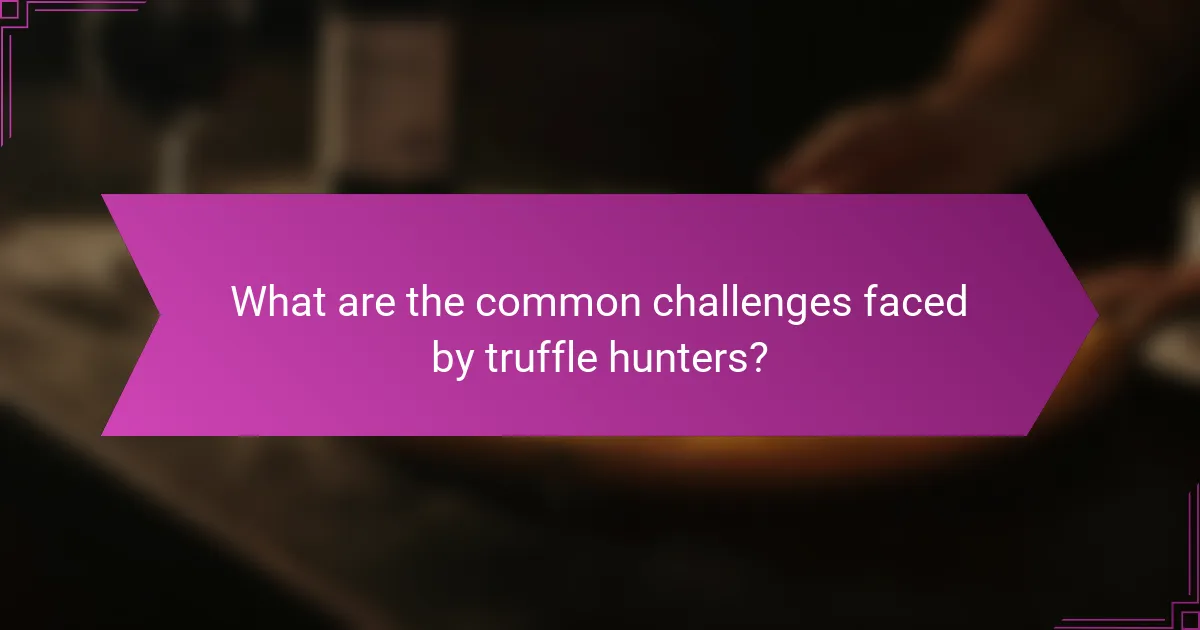
What are the common challenges faced by truffle hunters?
Truffle hunters face several common challenges, including unpredictable weather, competition for prime truffle locations, and the difficulty of training dogs to locate truffles. Additionally, the seasonal nature of truffle growth can limit hunting opportunities, and the high market demand can lead to price fluctuations. These factors can significantly impact the success and profitability of truffle hunting experiences in Italy.
How does climate change impact truffle growth and sustainability?
Climate change negatively affects truffle growth and sustainability by altering soil conditions, moisture levels, and temperature. These changes disrupt the symbiotic relationship between truffles and their host trees, impacting truffle yields. Warmer temperatures may lead to reduced truffle production in traditional regions of Italy, such as Piedmont and Umbria, while increased drought can affect the moisture necessary for truffle development. Sustainable truffle hunting practices may need to adapt to these environmental shifts to ensure continued availability.
What skills are essential for overcoming obstacles in truffle hunting?
Essential skills for overcoming obstacles in truffle hunting include patience, keen observation, and strong problem-solving abilities. Patience is crucial as truffle hunting can be time-consuming. Keen observation helps in identifying signs of truffles, while problem-solving skills are necessary to navigate challenges like weather conditions or terrain difficulties. Additionally, knowledge of truffle species and their habitats enhances success rates.
What are the best practices for sustainable truffle hunting?
Sustainable truffle hunting practices include respecting local regulations, using trained dogs for foraging, and avoiding overharvesting. These methods help preserve truffle ecosystems and ensure future availability. Additionally, hunters should educate themselves about the impact of their activities and promote biodiversity in truffle-rich regions. Engaging with local communities also fosters responsible practices and conservation efforts.
What expert tips can enhance the truffle hunting experience?
To enhance the truffle hunting experience, focus on preparation, location selection, and technique refinement.
First, invest in proper equipment, including a reliable digging tool and a truffle dog trained for scent detection. Second, choose regions known for truffle production, such as Piedmont and Tuscany, to increase your chances of success. Lastly, practice patience and observation, as truffles often grow in symbiosis with specific trees, which can guide your search.

